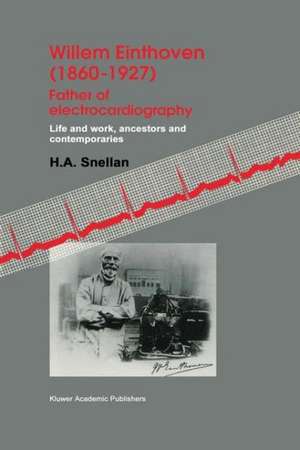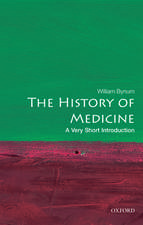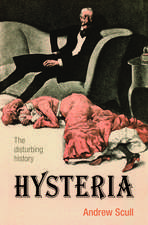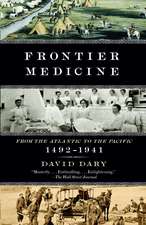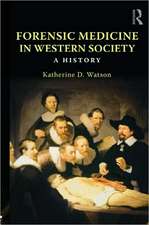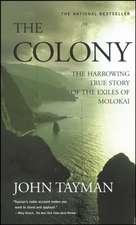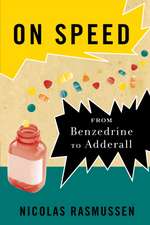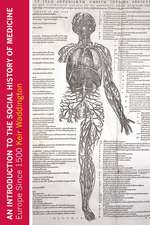Willem Einthoven (1860–1927) Father of electrocardiography: Life and work, ancestors and contemporaries
Autor H.A. Snellenen Limba Engleză Paperback – 31 dec 1994
Preț: 360.70 lei
Preț vechi: 379.68 lei
-5% Nou
Puncte Express: 541
Preț estimativ în valută:
69.04€ • 75.02$ • 58.03£
69.04€ • 75.02$ • 58.03£
Carte tipărită la comandă
Livrare economică 21 aprilie-05 mai
Preluare comenzi: 021 569.72.76
Specificații
ISBN-13: 9780792332749
ISBN-10: 0792332741
Pagini: 140
Ilustrații: II, 140 p. 24 illus.
Dimensiuni: 155 x 235 x 8 mm
Greutate: 0.22 kg
Ediția:1995
Editura: SPRINGER NETHERLANDS
Colecția Springer
Locul publicării:Dordrecht, Netherlands
ISBN-10: 0792332741
Pagini: 140
Ilustrații: II, 140 p. 24 illus.
Dimensiuni: 155 x 235 x 8 mm
Greutate: 0.22 kg
Ediția:1995
Editura: SPRINGER NETHERLANDS
Colecția Springer
Locul publicării:Dordrecht, Netherlands
Public țintă
ResearchCuprins
1 (1860–1885) Willem Einthoven’s ancestors. Early childhood at Semarang; school-days and medical training at Utrecht.- 2 (1886–1900) Scientific orientation and self-study at Leiden. Gradual concentration on electrophysiology in particular of the heart, using Lippmann’s capillary electrometer.- 3 (1901–1915) The string galvanometer and its applications; development of electrocardiography.- 4 (1916–1927) Ultimate improvement of the string galvanometer; its achievements and limitations. Einthoven’s American lecture tour and Nobel Prize. Survey of electrocardiography completed during final illness.- 5 Willem Einthoven and his relatives, friends and personally acquainted scientists. Part I: Selected Dutch correspondence: Donders, Bosscha, Lorentz, Julius, Wenckebach, de Vogel, W.F. Einthoven, de Waart.- 6 Willem Einthoven’s correspondence with personally acquainted colleagues. Part II: Selected correspondence in English and German: Fahr, Waller, Lewis, Wilson, Samojloff, A.V. Hill, Wiggers. Review of their papers on Einthoven.- 7 Additional evaluations of Einthoven’s work (by not personally acquainted authors) including Johansson (chairman Nobel Prize Committee) together with comments on Klaus and Nicolai; furthermore Burch and De Pasquale; Katz and Hellerstein; Shapiro; Cooper (Sections 1 and 4–7). Some correspondence and arrangements concerning production of the string galvanometer in particular with Edelmann and Ebert together with a comparison of Einthoven’s work to that of Ader (Sections 2 and 3).- Concluding remarks.- References.
